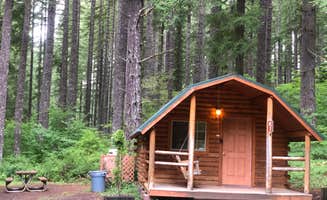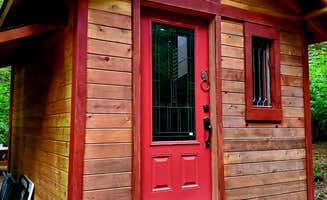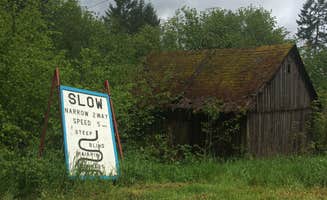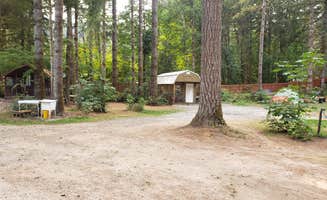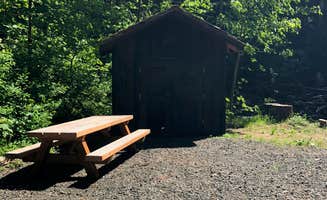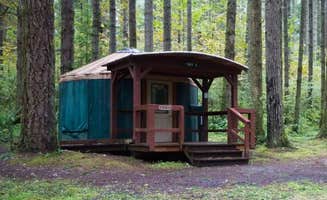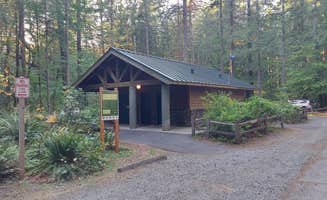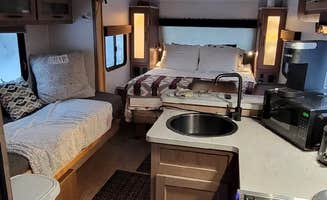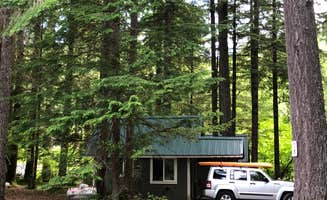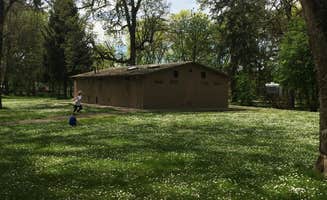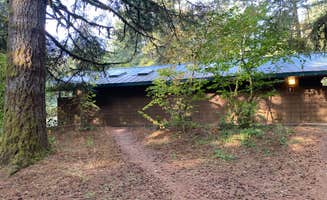Wooded campgrounds near St. Helens, Oregon offer access to diverse terrain at elevations from 45 to 650 feet. The Columbia River basin terrain supports a temperate rainforest climate with annual rainfall of 45-55 inches concentrated between November and March. Summer temperatures average 75-85°F during peak camping months, while winter sees frequent fog and cooler conditions.
What to do
Mountain biking trails: L.L. Stub Stewart State Park features extensive mountain biking trails for all skill levels. The park connects to the Banks-Vernonia Trail, a paved 21-mile route perfect for leisurely cycling. "I had a nice run on the Bumping Knots Loop," notes one visitor about Dairy Creek West.
Disc golf courses: Multiple courses are available within 30 minutes of St. Helens. Paradise Point State Park offers a beginner-friendly 9-hole course with concrete tee pads. "Located on barely 10 acres the designers have done a good job using every bit of the land here. Hole one is a fun one that plays under a freeway overpass," according to a Paradise Point reviewer.
Wildlife viewing: The wetland areas around Silver Lake provide excellent bird watching opportunities with over 40 species documented. "From the visitor center here was an additional path through the marsh with views of Mt. Saint Helen's," explains a visitor to Seaquest State Park.
What campers like
Quiet weekday stays: Mid-week camping provides significantly more privacy with 50-70% lower occupancy rates. "When we visited, there were at most 2-3 other groups in the area so we were very spread out and had lots of privacy," mentions a camper at Dairy Creek West, who appreciated the tranquil weekday atmosphere.
Hiking variety: Trail systems range from flat riverfront paths to steeper woodland terrain. "There are plenty of hiking trails of varying length, access to the Banks-Vernonia State Trail, several disc golf courses, cabins, a horse camp, a day use picnic/event area and a hike-in camp area," reports a visitor to L.L. Stub Stewart State Park.
River access: Direct water access points provide cooling options during summer months. "We kayaked around it was nice," notes a Camp Kalama visitor about the river access at this campground located 15 miles north of St. Helens.
What you should know
Highway noise: Several campgrounds are situated near major roadways. "Freeway is really really close to the whole camp site. You can hear vehicles at night. If you're a light sleeper or need nature noises when camping - this is not the site for you," cautions a Paradise Point State Park visitor.
Limited cell coverage: Signal varies dramatically by location and provider. "Clean bathrooms, one women's shower. Very shaded and dense forest. No cell (occasionally 1 bar LTE AT&T). Too heavily forested for Starlink," reports a Seaquest camper.
Campsite size restrictions: Many sites have specific tent or RV limitations. "We arrived and it was IMPOSSIBLE to get our rig in that site due to the trees. We couldn't even continue out the secondary loop because it was so narrow and had trees on the inside of turns," warns an RVer at Paradise Point.
Tips for camping with families
Playground access: Several campgrounds feature play equipment for children. "The camp ground was nice and quiet despite some larger groups and the shelters were perfect for sliding a tent in with bunks even. Great trails near," notes a visitor to Camp Wilkerson, which offers family-friendly amenities.
Junior Ranger programs: Educational activities run during summer months at select parks. "At night the campground had a great Junior Ranger program with a very enthusiastic park ranger that kept the almost 50 people/kids entertained. She was great at engaging all the kids and teaching them about the park," recommends a Seaquest visitor.
Group camping options: Special areas accommodate multiple families traveling together. "The group camping areas have lean to that can accommodate many people in the bunks. We brought a pop up camper and was able to get it set up nicely," explains a Camp Wilkerson reviewer.
Tips from RVers
Site selection strategy: Research specific site dimensions before booking. "Some were very apparent that it was smaller than other sites, but I loved that each site came with picnic table. Also some camp sites did not accommodate for multiple tents because uneven grounds and tree stumps," advises a Paradise Point camper.
Dump station availability: Several campgrounds offer dump stations for registered campers. "Electric and water, dump station included in fee which was $40/night. If not camping here, it is $5 to dump," notes a visitor to Big Eddy Park.
Partial hookup options: Many sites offer water and electric connections but not full sewer. "Great state park with all the usual amenities: fire pits, trees, ranger station. It's basically two different types of campgrounds in one: there's the sites more out in the open that are closer to the freeway. Then there's a bunch further away in both a meadow and the woods," explains a Paradise Point reviewer.


